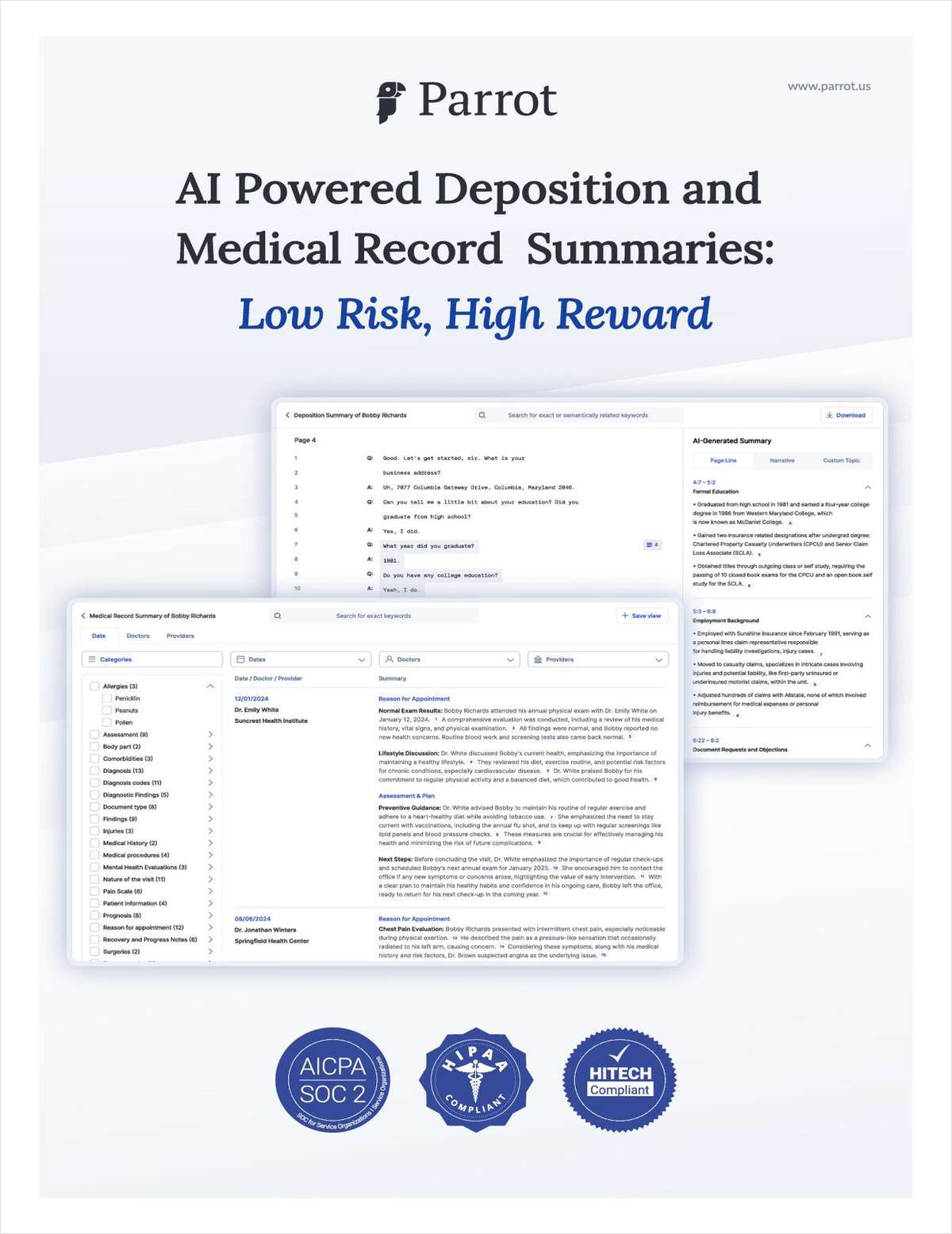When These Law Firm Leaders Left Abruptly, Their Firms' Numbers Took a Blow
All four Am Law 200 firms whose leaders moved in-house between 2012 and 2017 saw growth slow. Three even saw their revenues decline by the third year.
March 26, 2019 at 03:00 PM
6 minute read
 Thomas Reid, who is leaving Davis Polk & Wardwell for a GC role at Comcast.
Thomas Reid, who is leaving Davis Polk & Wardwell for a GC role at Comcast.
Just days after Davis Polk & Wardwell managing partner Thomas Reid announced he was leaving the firm to serve as Comcast Corp.'s next general counsel, the firm revealed its 2018 financial results. The numbers glowed.
Gross revenue increased by 12 percent to a record-high near $1.4 billion and profits per equity partner climbed even more. Reid says he wouldn't have left the 170-year-old Wall Street firm if it wasn't in a position to thrive.
But if revenues at Davis Polk continue to grow in double figures over the next several years, the firm will have managed to break from a trend: All four Am Law 200 firms that have undergone a similar transition since 2012 saw top-line growth rates slow in the second and third years after the changeover. Three of those firms even saw their revenues decline by the third year.
Consultant Janet Stanton of Adam Smith Esq. suggests that these sudden departures can prove destabilizing to law firms, even if a leader is going directly to a client where there's an existing relationship.
“People get distracted, particularly if it's a sudden and unexpected jump,” she says.
Law firms, big and small, witness changes in leadership all the time. Most commonly, the partnership sees it coming, whether from the pending expiration of a fixed term or an announcement that the managing partner intends to step down months into the future.
The move in-house, which usually unfolds over a more compressed timeline, is less common. In 2018, the number of Am Law 100 firm leaders leaving their post to become general counsel matched the number of leaders stepping down because of scandal: one.
The legal world found out about Dane Butswinkas' planned move from the chairman's role at Williams & Connolly to become general counsel of Tesla Corp. in early December, and he started at the automaker at the beginning of January. (By the middle of February, Butswinkas was back at the D.C. firm full time, citing a “cultural” mismatch at Tesla.)
The firms that saw comparable moves between 2012 and 2017 were Shearman & Sterling, whose leader, Rohan Weerasinghe, joined CitiGroup; Dorsey & Whitney, whose leader, Marianne Short, joined UnitedHealth; Reed Smith, whose leader, Greg Jordan, joined PNC; and Jenner & Block, whose leader Susan Levy, joined Northern Trust. Representatives from each of the firms declined to talk about their preparedness for the transition. (News reports indicate that Jordan's 2013 exit was the most sudden of the four, as he started at longtime client PNC just 10 days after the news broke, a jarring end to 13 years at the helm of the firm.)
Without awareness of the internal dynamics at the firms and a detailed assessment of trends in their major markets and practices, it's impossible to draw a firm connection between the moves and the declining revenue growth. Still, the relationship is intriguing.
“Four firms is not necessarily a trend, but there's a great deal of consistency there,” says Bruce MacEwen, Stanton's colleague at Adam Smith, after reviewing the numbers.
The two agree that the disturbance of figuring out a new direction on the fly is a more-than-plausible explanation. Stanton recalls a point earlier in her career, when her employer's performance suffered amid a protracted merger.
“Management completely took its eye off the ball for two years, and of course we were distracted,” she says.
The solid revenue growth posted by all four firms in the year immediately following these transitions doesn't detract from this point, as those short-term gains are often baked in.
Alternatively, the arrow of causation could point in the opposite direction. Rather than prompting an abrupt transition whose distracting effects played out over multiple years, the leaders in question may have been privy to discouraging projections about their firms' futures. A landing spot at a top client would be a way to keep their reputations untarnished.
“Lawyers are driven by achievement and wired to avoid failure,” says Altman Weil principal Eric Seeger.
Stanton also acknowledges this prospect, noting that the frequently heard aphorism about never wasting a good crisis may motivate leaders in some industries, but not this one: “Lawyers are not inclined to think that way,” she says.
Some opportunities may indeed follow a leader's move to a top client, which could serve to lock in or even intensify a lucrative relationship.
“If it's a big client with millions in fees, that's arguably more important than the partner staying at the firm,” says Jeffrey Lowe, who leads Major, Lindsey & Africa's law firm practice group. “I think most people would look at it as a good thing.”
But for even the smallest firm of the four, Dorsey & Whitney, which brought in over $337 million in revenue in 2017, growth from a single client, even a multimillion-dollar one, may be overvalued.
“Even if you were to get more business from Comcast or PNC Bank, I don't think that can compensate for the lack of focus broadly across the firm,” Stanton says.
The numbers also suggest that leadership now matters more than ever.
“Before the meltdown, the mantra for managing partners was, 'First, do no wrong.' The rising tide would lift all boats,” MacEwen says.
A hypercompetitive environment swollen with new entrants, combined with greater discipline among clients, has created a new era.
Consequently, while placing future leaders in positions with a great deal of responsibility is always wise, that pipeline becomes especially critical in the event of a sudden transfer of power.
“My experience in law firms is that you never have as many leaders as you'd like,” Seeger says. “The best way to get more leaders is to deliberately and proactively develop that capacity.”
Email: [email protected]
This content has been archived. It is available through our partners, LexisNexis® and Bloomberg Law.
To view this content, please continue to their sites.
Not a Lexis Subscriber?
Subscribe Now
Not a Bloomberg Law Subscriber?
Subscribe Now
NOT FOR REPRINT
© 2025 ALM Global, LLC, All Rights Reserved. Request academic re-use from www.copyright.com. All other uses, submit a request to [email protected]. For more information visit Asset & Logo Licensing.
You Might Like
View All
Law Firms Look to Gen Z for AI Skills, as 'Data Becomes the Oil of Legal'

Law Firms Expand Scope of Immigration Expertise Amid Blitz of Trump Orders
6 minute read
Losses Mount at Morris Manning, but Departing Ex-Chair Stays Bullish About His Old Firm's Future
5 minute read
Trending Stories
- 1Uber Files RICO Suit Against Plaintiff-Side Firms Alleging Fraudulent Injury Claims
- 2The Law Firm Disrupted: Scrutinizing the Elephant More Than the Mouse
- 3Inherent Diminished Value Damages Unavailable to 3rd-Party Claimants, Court Says
- 4Pa. Defense Firm Sued by Client Over Ex-Eagles Player's $43.5M Med Mal Win
- 5Losses Mount at Morris Manning, but Departing Ex-Chair Stays Bullish About His Old Firm's Future
Who Got The Work
J. Brugh Lower of Gibbons has entered an appearance for industrial equipment supplier Devco Corporation in a pending trademark infringement lawsuit. The suit, accusing the defendant of selling knock-off Graco products, was filed Dec. 18 in New Jersey District Court by Rivkin Radler on behalf of Graco Inc. and Graco Minnesota. The case, assigned to U.S. District Judge Zahid N. Quraishi, is 3:24-cv-11294, Graco Inc. et al v. Devco Corporation.
Who Got The Work
Rebecca Maller-Stein and Kent A. Yalowitz of Arnold & Porter Kaye Scholer have entered their appearances for Hanaco Venture Capital and its executives, Lior Prosor and David Frankel, in a pending securities lawsuit. The action, filed on Dec. 24 in New York Southern District Court by Zell, Aron & Co. on behalf of Goldeneye Advisors, accuses the defendants of negligently and fraudulently managing the plaintiff's $1 million investment. The case, assigned to U.S. District Judge Vernon S. Broderick, is 1:24-cv-09918, Goldeneye Advisors, LLC v. Hanaco Venture Capital, Ltd. et al.
Who Got The Work
Attorneys from A&O Shearman has stepped in as defense counsel for Toronto-Dominion Bank and other defendants in a pending securities class action. The suit, filed Dec. 11 in New York Southern District Court by Bleichmar Fonti & Auld, accuses the defendants of concealing the bank's 'pervasive' deficiencies in regards to its compliance with the Bank Secrecy Act and the quality of its anti-money laundering controls. The case, assigned to U.S. District Judge Arun Subramanian, is 1:24-cv-09445, Gonzalez v. The Toronto-Dominion Bank et al.
Who Got The Work
Crown Castle International, a Pennsylvania company providing shared communications infrastructure, has turned to Luke D. Wolf of Gordon Rees Scully Mansukhani to fend off a pending breach-of-contract lawsuit. The court action, filed Nov. 25 in Michigan Eastern District Court by Hooper Hathaway PC on behalf of The Town Residences LLC, accuses Crown Castle of failing to transfer approximately $30,000 in utility payments from T-Mobile in breach of a roof-top lease and assignment agreement. The case, assigned to U.S. District Judge Susan K. Declercq, is 2:24-cv-13131, The Town Residences LLC v. T-Mobile US, Inc. et al.
Who Got The Work
Wilfred P. Coronato and Daniel M. Schwartz of McCarter & English have stepped in as defense counsel to Electrolux Home Products Inc. in a pending product liability lawsuit. The court action, filed Nov. 26 in New York Eastern District Court by Poulos Lopiccolo PC and Nagel Rice LLP on behalf of David Stern, alleges that the defendant's refrigerators’ drawers and shelving repeatedly break and fall apart within months after purchase. The case, assigned to U.S. District Judge Joan M. Azrack, is 2:24-cv-08204, Stern v. Electrolux Home Products, Inc.
Featured Firms
Law Offices of Gary Martin Hays & Associates, P.C.
(470) 294-1674
Law Offices of Mark E. Salomone
(857) 444-6468
Smith & Hassler
(713) 739-1250










